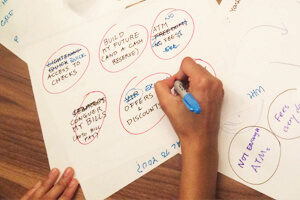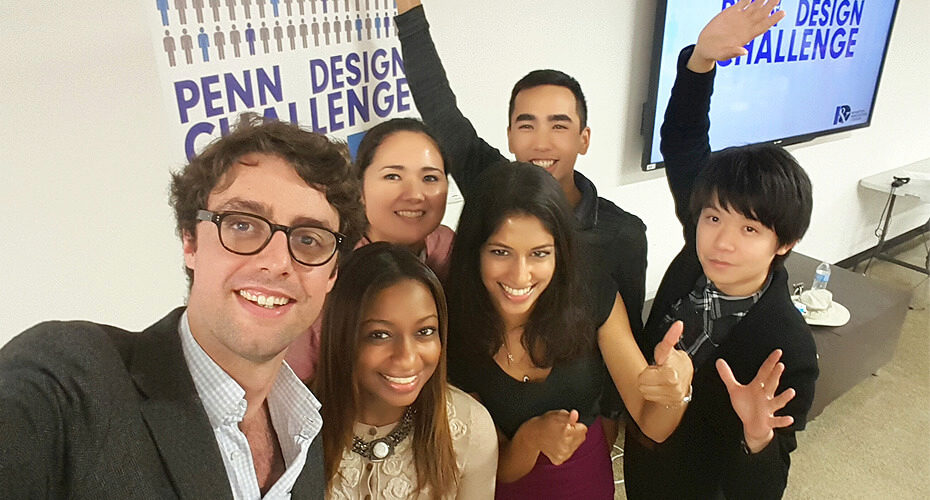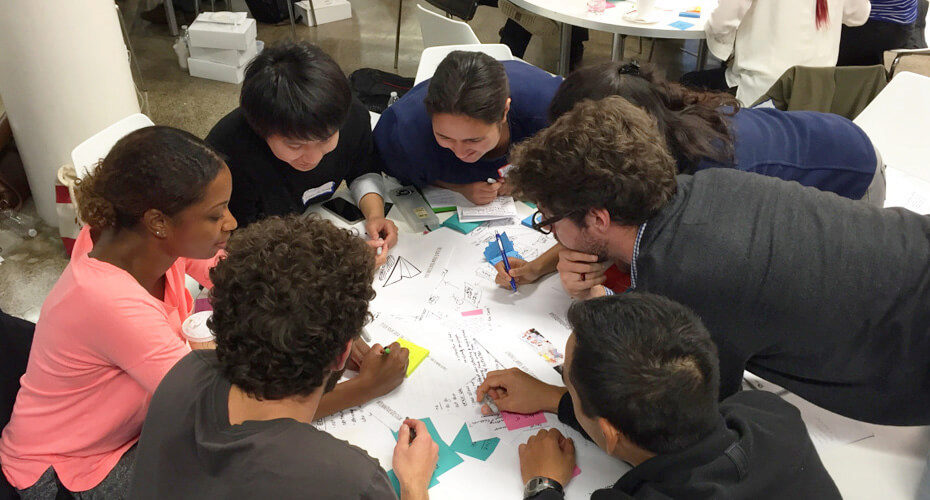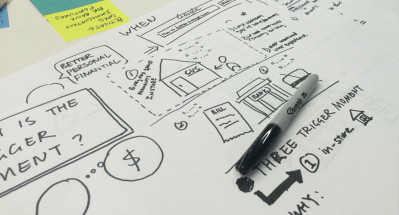 70 million Americans lack access to traditional banking services. Instead, those in a financially precarious position often must resort to predatory alternatives such as payday lenders. This year, ten teams of Penn students focused on changing this system.
70 million Americans lack access to traditional banking services. Instead, those in a financially precarious position often must resort to predatory alternatives such as payday lenders. This year, ten teams of Penn students focused on changing this system.
The Penn Design Challenge is the largest cross-university, multi-disciplinary competition in the University of Pennsylvania’s 200+ year history, and the Mack Institute is its exclusive campus sponsor. Over seven weeks each year, students from programs across the university compete to develop transformational ideas for actual companies.
The third annual challenge partnered with American Express and innovation accelerator Made by Many. Students from Design, Engineering, and Wharton worked together to rethink how “underbanked” individuals can better interact with their finances and manage their spending. The ultimate goal: Use technology to create a meaningful alternative to traditional banking, making the financial system more inclusive to all.
The winning team, Paper Plane, talked about their experiences in the Challenge below.

How did you approach your solution to problems faced by underbanked populations?
We decided to focus on improving the in-store experience when discovering and signing up for Serve [American Express’ prepaid debit service]. Our solution was to implement a kiosk with an engaging interface that would 1) increase Serve’s visibility 2) help people chose the right card 3) quickly activate the card and 4) eliminate confusion during sign-up.
The solution came from insights gleaned from user research. We interviewed consumers and signed up for the card ourselves to deepen our sense of what it’s like to exist outside the traditional banking system. We learned that the attributes these consumers wanted were already offered in Serve’s product features, but the majority of people we spoke with never heard of Serve. This led us to redefine the problem statement into how Serve can be more engaging in generating awareness about the product.
Why did you get involved in the Penn Design Challenge?
When I found out what this year’s challenge topic was, I was intrigued and knew immediately that I wanted to participate. As a former American Express employee, I was somewhat familiar with the company’s efforts around promoting financial inclusion for underbanked populations. I knew that the Serve product existed but really didn’t understand it, or how prepaid products work in general. I thought that this would be a great opportunity to learn about it, while at the same time sharpen my skills in applying design thinking toward consumer-centric problems.

What surprised you about this experience in design thinking?
For most of the process I felt incredibly lost, trying to wrap my head around the task and grasping for direction. It turns out, that’s how it’s supposed to feel! It was really odd to let go of any preconceived ideas and trust in the process and our consumer research, but I definitely liked the results. We were able to come up with an idea I believed in.
 What did you take away from the competition?
What did you take away from the competition?
The Penn Design Challenge was one of the most useful experiences that I have participated in while here at Wharton. Many of the top innovative companies follow the design thinking process and this challenge was a great way to apply the theory that I have learned to a real business issue. My previous design thinking experience was mostly focused around physical product design, and it was a very valuable exercise to be able to understand how that process can apply to a variety of industries, including financial services.
Team members Monica Myers, Elaine Lai, and Aditi Dugar contributed to this post.



